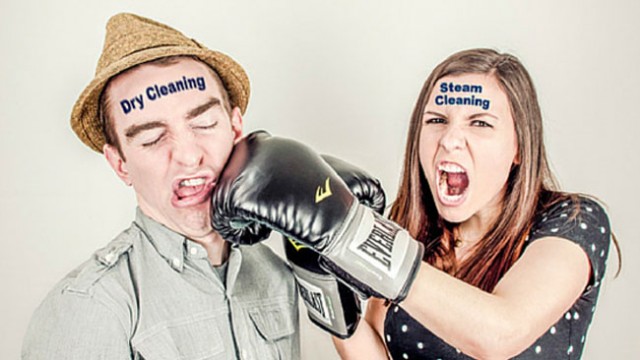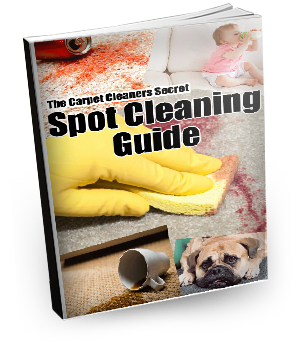Carpet dry cleaning vs steam cleaning, which one is best?
It’s one of the most frequent questions I get asked…
And no, it’s not “How long will it take for my carpets to dry?”, though I must say, that comes in a close 2nd!
It’s wanting to know the difference between dry cleaning or steam cleaning carpet.
When it comes to understanding what’s involved in these 2 different cleaning methods. There is a lot of confusion, misinformation and misconceptions out there.
This is hardly surprising. Both the carpet dry cleaning and steam cleaning industries tend to only promote their own methods.
So in this article I’m going to explain both types of cleaning and look at the benefits and negatives of each one. By the end of this article you’ll be able to make an informed decision about what method will suit your needs.
So let’s get into it and look at carpet dry cleaning vs steam cleaning and the pro’s and con’s of each.
The Dry Cleaning Method.
There are 3 main types of carpet dry cleaning. Yet only one, dry powder cleaning, is a true dry clean method. The others use some moisture but all come under the banner of dry cleaning due to quick drying times.
1. Dry Powder Cleaning.
Method: An absorbent compound is sprinkled over the carpet or applied with a machine. This contains a tiny amount of water, an absorbent carrier, detergent and a solvent.
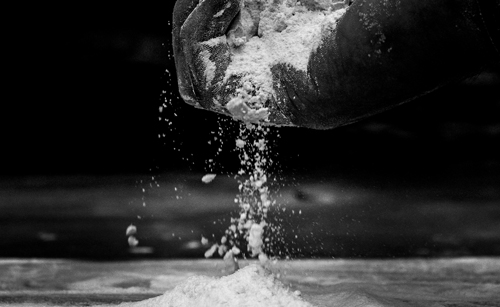
The theory is that this compound then acts like thousands of micro-sponges. These act to dissolve and absorb any dirt and soiling.
After a short drying time, the dislodged and absorbed soil is then vacuumed away.
Benefits:
- Allows you to walk on the carpet immediately.
- No water added so less risk of damage to your carpet.
Negatives:
- Difficult to remove all residues. Some of these can cause allergy, re-soiling and in rare cases, carpet discoloration.
- Only removes dirt from the surface of the carpet.
- Struggles with heavy soiling and stubborn stains.
Conclusion: Appropriate as a maintenance clean especially where wet carpet may be a hazard. E.g Hotel foyers, pubs, offices, etc.
Fine for freshening up lightly soiled carpet between a deeper more effective cleaning method like hot water extraction/steam cleaning. Host® and Capture® are the 2 main dry powder cleaning methods.
2. Encapsulation Cleaning
Method: This method uses polymer detergent encapsulators applied with a rotary machine. The carpet takes about 20-30 minutes to dry and the encapsulators bind the soil particles to them.
These are then vacuumed out in the same way as dry powder cleaning.
This is quite a complex method and there is more in depth information available here.
Benefits:
- Allows you to walk on the carpet after vacuuming.
- Low water usage, so less risk of the carpet becoming saturated.
- Tends to remove more dirt and be more effective on soiling and stains than the dry powder method.
- Residues left in the carpet tends to keep on absorbing soils which are then vacuumed away. Carpet can actually get cleaner as time progresses because more soils get loosened. This method doesn’t have as bad a re-soiling problem as the dry powder method for this reason.
Negatives:
- Not as effective on deep down soils and stubborn stains as other methods like steam cleaning.
- The rotary action can damage delicate fibers so a well trained operator is a must.
Conclusion: Good for commercial and domestic applications as a maintenance clean. As far as it being a restorative clean, well the technology with this process is getting better.
I would still alternate with hot water extraction/steam cleaning to remove deep down soils.
3. Bonnet Cleaning
This method is what most people understand as carpet dry cleaning. It’s like encapsulation, except a non-foaming detergent or even soda water is used.
The carpet is pre-sprayed first with the cleaning solution. It’s then agitated with a rotary scrubber with an absorbent bonnet pad attached.
The theory here being that the dirt becomes suspended in the cleaning solution and the pad absorbs it up. The carpet is then vacuumed once dry to remove as much residue as possible.
Benefits:
- Usually a quick drying time, though I have seen exceptions to this from poor operators. Good as a commercial maintenance clean, where wet carpet could be a problem.
- Low water usage, so less risk of the carpet becoming saturated and damaged.
Negatives:
- Only a surface clean. Not as effective on deep down soils and stubborn stains as other methods like steam cleaning.
- The rotary action can damage delicate fibers so a well trained operator is a must.
- Prone to re-soiling. Stains and spills tend to reappear after a while as they attract dirt back to them.
The Steam Cleaning / Hot Water Extraction Method.
Steam cleaning is the process of cleaning carpets using hot water. Usually a detergent pre-spray is applied to the carpet first.
Some operators then agitate it through with either a micro fibre pad or brush, depending on the method and type of carpet.
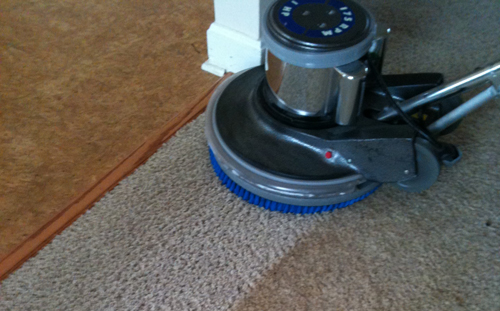
This is then followed by hot water extraction with a hot water extraction machine.
This sprays hot water onto the carpet and then sucks the pre-spray, dirt and soils back up with it. It is rather like a large vacuum cleaner but instead of air it uses hot water.
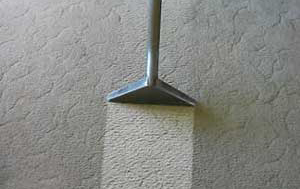
You can see step a step by step illustration of this method here.
Benefits:
- Provides a much deeper and thorough clean. Dirt and grit collect around the base of the carpet fibers. This causes carpet wear when combined with traffic. Steam cleaning removes this deep down dirt and grit much better than other methods.
- Removes spills and stains deep in the pile so there is less chance of them re-appearing.
- Much better for removing dust mites, allergens and killing bacteria in carpets than other methods.
Negatives:
- Can leave the carpet much wetter than other methods. This varies from company so always ask for an estimate.
- A risk of damage to the carpet through over-wetting of carpet. This is a factor of operator error and not the cleaning method itself.
- You will generally have to keep off the carpet until it dries.
Conclusion: Steam cleaning is the only carpet recommended by most carpet manufacturers. It is also the only cleaning method that is truly a restorative clean and recommended by the Australian and NZ carpet cleaning standard AS/NZS 3733.
You can view the Australian and NZ carpet cleaning standard here.
Carpet dry cleaning vs steam cleaning – wrapping it up!
Hopefully I’ve managed to lay out all the facts for you regarding carpet dry cleaning vs steam cleaning, in an easy to understand manner.
What you have to understand is that there is no perfect cleaning method that suits everyone.
People have different needs and expectations.
As you have seen, some are a lot more thorough than others. Now it’s just a matter of deciding what is right for you.
All I can recommend is that you do your due diligence. Ask plenty of questions of the operator your choose and if the answers don’t agree with what you have now learned from this article. Well…ask for a good explanation or look for someone else.
Remember, your carpet is a large investment in your home.
Treated and maintained properly it should give you many years of enjoyment.
What have been your own experiences in regards to these methods, what was your best and worse experience getting your carpets cleaned?

